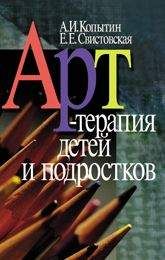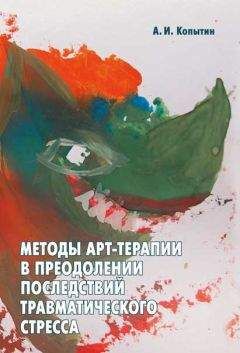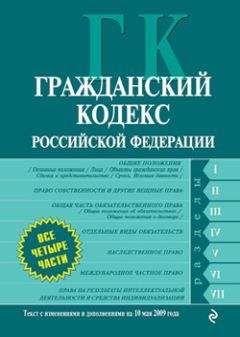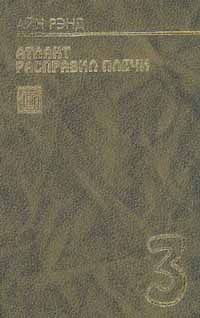Kopytin A. Using Silver Drawing Test for assessing normal and traumatized children and adolescents living in the areas affected by Chernobyl nuclear accident // Trauma und Kreativitat. Therapie mit kunstlerischen medien / Hrsg. R. Hampe, Ph. Martius, A. Reiter, G. Schottenloher, F. Von Spreti. Universitat Bremen, 2004. P. 407–416.
Kopytin A., Sventsitskaya V., Svistovskaya E. Fantasizing about violence: using the Draw-a-Story Test in assessing adult psychiatric patients who committed severe criminal acts and delinquent adolescents // Aggression and depression assessed through art / Ed. by R. Silver. New York: Brunner-Routledge, 2005. P. 141–160.
Kramer E. Art therapy in a children’s community. Springfield: Charles Thomas Publisher, 1958.
Kramer E. Art and therapy with children. New York: Schocken Books, 1971.
Kramer E. Childhood and art therapy. New York: Schocken Books, 1979.
Kramer E. Art as therapy. Collected papers. London: Jessica Kingsley Publishers, 2000.
Kramer E., Schehr J. An Art Therapy Evaluation Session for Children // American Journal of Art Therapy. 1983. 23. P. 3–12.
Kris E. Psychoanalysis and the study of creative imagination // The Selected papers of Ernsts Kris. New Haven: Yale University Press, 1975.
Landgarten H. Clinical art therapy: a comprehensive guide. New York: Brunner-Mazel, 1980.
Liebmann M. Art therapy for groups. London: Croom Helm, 1986.
Liebmann M. Art therapy in practice. London: Jessica Kingsley Publishers, 1990.
Liebmann M. Art therapy with offenders. London: Jessica Kingsley Publishers, 1993.
Liebmann M. Art therapy for groups. Hove: Brunner-Routledge, 2004.
Lowenfeld V. The nature of creative activity. New York: Harcourt, Brace, 1939.
Lowenfeld V. Creative and mental growth. New York: Macmillan, 1947.
Marshall S.B. The use of art therapy to foster cognitive skills with learning disabled children. Master’s thesis. Pratt Institute, School of Art and design, Brooklyn, N Y, 1988.
McNeilly G. Directive and Non-Directive Approaches in Art Therapy // The Arts in Psychotherapy. 1983. 10: 4. P. 211–219.
McNeilly G. Further Contributions to Group Analytic Art Therapy // Inscape. 1987. Summer. P. 8–11.
McNeilly G. Group Analysis and Art Therapy: A Personal Perspective // Group Analysis. 1990. 23: 3. P. 215–224.
McNiff S. Organizing visual perception through art // Academic Therapy Quarterly. 1974. 9 (6). P. 12–16.
McNiff S. Art activity for evaluating visual memory // Academic Therapy Quarterly. 1976. 11 (3). P. 34–43.
McNiff S. Robert Coles, children of crisis and art education // Art Teacher. 1979. 9 (2). P. 34–39.
McNiff S., Knill P. Musik in der Ausdruckstherapie fur lernbehinderte // Schweizerische Musikzeitung (Swiss Journal of Music). 1976. 1. P. 24–34.
McNiff S., Knill P. Musik und gruppenimprovisation in der ausdruckstherapie fur lernbehinderte // Musik und communikation. 1978. November. 1.
McNiff S., McNiff K. Art therapy in the classroom // Art Teacher. 1976. Spring. P. 21–29.
McNiff S. Art as medicine. London: Schambhala, 1992.
McNiff S. Art heals. Boston: Schambhala, 2004.
Milner M. On not being able to paint. London: Heinemann, 1950.
Milner M. The hands of the living god. London: Virago, 1969.
Milner M. The suppressed madness of sane men. London: Tavistock, 1989.
Molloy T. Art Therapy and Psychiatric Rehabilitation: Harmonious Partnership or Philosophical Collision? // Inscape. 1984. August. P. 2–10.
Moriya D. Strategies for dealing with the challenges facing art therapists in the school system. Pre-conference course presented at the 31st annual conference of the American Art Therapy Association, St. Luis, MO.
Moriya D. Considerations in the transition of art therapists from the clinic to the school. Paper presented at the 31st annual conference of the American Art Therapy Association, St. Luis, MO.
Moriya D. Art therapy in schools. Ramat Hashron: Turbo, 2000.
Naumburg M. Studies of the free expression of behavior disturbed children as a means of diagnosis and therapy. New York: College Foundation, 1947.
Naumburg M. Dynamically oriented art therapy: its principles and practicies. New York: Grune and Stratton, 1966.
Okada T. Integration of art therapy for pupils with behavioral problems at schools in Japan. KunstReiz. Neurobiologische Aspekte kunstlerischer Therapien. Heidelberg 4-6.03.2005.
Pfeiffer L. Foreword // Aggression and depression assessed through art / Ed. by R. Silver. New York: Brunner-Routledge, 2005. P. xvii–xix.
Prokofiev F. Adapting the art therapy group for children // Art psychotherapy groups / Ed. by S. Skaife, V. Huet. London and New York: Routledge, 1998.
Riley S. Contemporary art therapy with adolescents. London: Jessica Kingsley Publishers, 1999.
Schaffer D., Fischer P. The Epidemiology of Suicide in Children and Young Adolescents // Journal of American Association of Child Psychiatry. 1981. 21. P. 545–565.
Schaverien J. The picture within the frame. In Pictures at an exhibition / Ed. by A. Gilroy, T. Dalley. London: Tavistock and Routledge, 1989.
Schaverien J. The revealing image: analytical art psychotherapy in theory and practice. London: Routledge, 1992.
Selfe L. Normal and anomalous representational drawing ability in children. London: Academic Press, 1983.
Silver R. Children with communication disorders: cognitive and artistic development // American Journal of Art Therapy. 1975. 14 (2). P. 39–47.
Silver R. Using art to evaluate and develop cognitive skills: children with communication disorders and children with learning disabilities // American Journal of Art Therapy. 1976. 16 (1). P. 11–19.
Silver R. The question of imagination, originality, and abstract thinking by deaf children // American Annals of the Deaf. 1977. 122 (3). P. 349–354.
Silver R. Developing cognitive and creative skills through art. Baltimore: University Park Press, 1978.
Silver R. Stimulus drawings and techniques in therapy, development and assessment. New York: Trillium, 1982.
Silver R. Identifying gifted handicapped children through their drawings // Journal of the American Art Therapy Association. 1983a. 1 (10). P. 40–46.
Silver R. Silver Drawing Test of Cognition and Emotion. Seattle, WA : Special Child, 1983b.
Silver R. Screening Children and Adolescents for Depression Through Drawing a Story // American Journal of Art Therapy. 1988a. 26 (4). P. 119–124.
Silver R. Draw a Story: Screening for Depression. Mamaroneck, NY: Ablin Press, 1988b.
Silver R. Developing cognitive and creative skills through art. Mamaroneck, N Y: Ablin, 1989.
Silver R. Draw a Story: Screening for Depression and Age and Gender Differences. New York: Trillium, 1993.
Silver R. Silver Drawing Test of Cognition and Emotion. New York: Ablin Press, 1996a.
Silver R. Differences in Solitary and Assaultive Fantasies of Delinquent and Non-Delinquent Adolescents // Adolescence. 1996b. Vol. 31 (123). P. 543–552.
Silver R. Stimulus drawings and techniques in therapy, development and assessment. Sarasota, FL: Ablin, 1997.
Silver R. Developing cognitive and creative skills through art: programs for children with communication disorders (4th ed.). Lincoln, NE: An Author’s Guild Backprint, 2000.
Silver R. Three Art Assessments. New York: Brunner-Routledge, 2002.
Silver R. Aggression and depression assessed through art / Ed. by R. Silver. New York: Brunner-Routledge, 2005.
Silver R., Boeve E., Hayes K., Itzler J., Lavin C., O’Brien J., Terner N., and Wohlberg P. Assessing and developing cognitive skills in handicapped children through art. NIE Project № 79 0081. NY: College of New Rochelle, 1980.
Silver R., Ellison J. Identifying and assessing self-images in drawings by delinquent adolescents // The Arts in Psychotherapy. 1995. 22 (4). P. 339–352.
Silverstone L. Art therapy: the person-centered way. London: Jessica Kingsley Publishers, 1997.
Steward M.S., Farquar L.C., Dicharry D.C., Glick D., Martin P. Group therapy: a treatment of choice for young victims of child abuse // International Journal of Child Psychotherapy. 1986. Vol. 36. № 2. P. 261–275.
Strand S. Counteracting Isolation. Group Art Therapy for People with Larning Difficulties // Group Analysis. 1990. 23 (3). P. 255–263.
Thornton R. Review of Gerry McNeilly’s Article and Non-Directive Approaches in Art Therapy // Inscape. 1985. Summer. P. 23–24.
Torrance E.P. Guiding Creative Talent. Englewood Cliffs, NJ: Prentice Hall, 1962.
Torrance E.P. Creative Intelligence and an Agenda for 80s. // Art Education. 1980. 33 (7). P. 8–14.
Wadeson H. Art Psychotherapy. New York: Willey and Sons, 1980.
Waller D. Group interactive art therapy. London: Rourledge, 1993.
Waller D. Art Psychotherapy at CEIS // Treatment of Addiction. Current Issues for Arts Therapies / Ed. by D. Waller, J. Mahony. London: Routledge, 1999.
Williams F.E. Creativity Assessment Packet. Buffalo, NY.: D.O.K. Publisher, 1980.
Wiltshire S. Drawings. London: Dent, 1987.
Wolf V.B. Group therapy of young latency age sexually abused girls // Journal of Child and Adolescent Group Therapy. 1992. Vol. 3. № 1. P. 25–39.
Приложение 1
Образец коррекционно-развивающей арт-терапевтической программы работы с учениками массовых школ
Приложение 2
Образцы арт-терапевтических техник, игр и упражнений
Карта района или города
Содержание: ребенку/подростку предлагается создать в технике фотоколлажа план района или города, используя при этом вырезки из журналов. При желании он также может нарисовать некоторые объекты, например, реку, дорогу. Такая карта может как соответствовать, так и не соответствовать реальному району или городу, которые знакомы ребенку. Создав карту, он может также «заселить» район или город людьми (расположив на ней фотографии людей, в том числе самого себя, своих друзей или родственников) и животными, фантастическими существами и героями мультфильмов, включить в нее транспортные средства. Вполне логично дополнить такую работу сочинением рассказа об истории созданного ребенком города или района и населяющих его персонажах.
Группа Б: «Общие темы»Праздники
Содержание: участникам группы предлагается создать серию фотоснимков на тему какого-либо семейного, религиозного или светского праздника, а когда снимки будут напечатаны – определенным образом организовать их в пространстве или, дополнив текстами, создать плакат, инсталляцию или миниальбом-книжку. После этого происходит представление работ и их обсуждение.
Очевидно, что данная форма работы рассчитана на длительное время и допускает обращение к другим темам и упражнениям. Кроме того, она позволяет интегрировать опыт обращения к различным темам и способствует ретроспективному обзору процесса работы группы за определенный период. Логично было бы связать ее с завершением работы (терминацией), временным перерывом в работе (например, отпуском) или завершением календарного года.
Цвета вокруг нас
Содержание: участникам группы предлагается создать серию фотоснимков, на которых представлены объекты различных цветов. Желательно, чтобы каждый цвет был представлен несколькими оттенками. Вполне допустимо метафорическое прочтение данной темы, позволяющее передать различные оттенки состояний природы и человека, что может предполагать фотографирование участниками группы друг друга и других людей. Метафорическое «прочтение» цвета также может быть связано с идеей изменений, а потому – так же, как и предыдущая тема – располагать к передаче опыта физической и психической трансформации.





